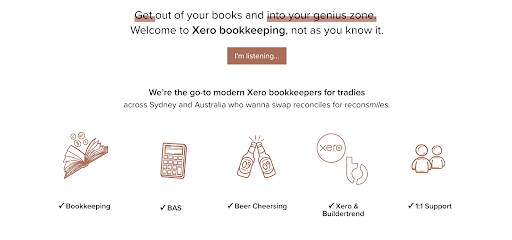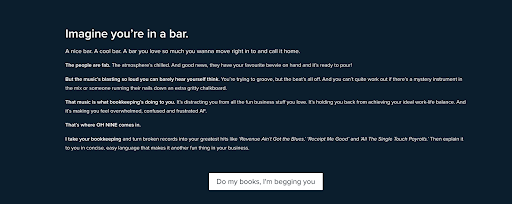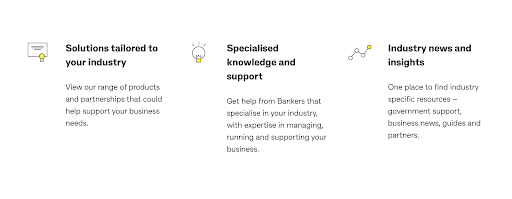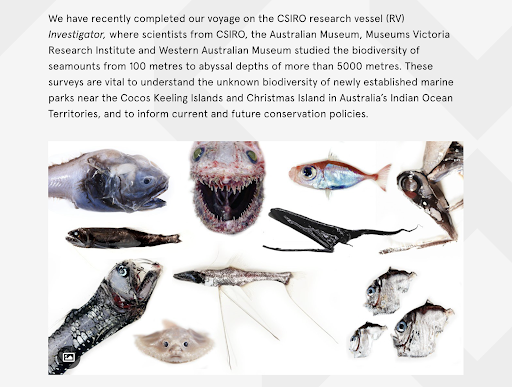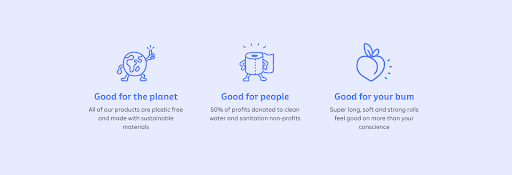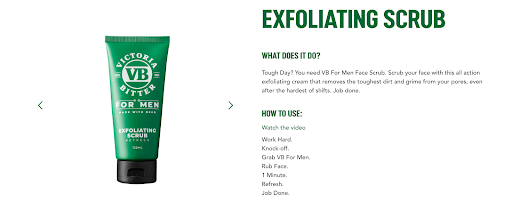“Don’t use that tone of voice with me!”
It’s possible — if not overly likely — you heard that one once or twice while growing up. Take the wrong tone and you wouldn’t need a second warning that it wasn’t the most suitable way of talking to your parent.
However, marketers are not afforded the “luxury” of such a stern-yet-insightful speaking-to. Readers aren’t quick to give the benefit of the doubt. Speak to them the wrong way and you might not get soap in the mouth, but you will surely feel the sting when customers reject your blog posts and social media pages, or even products. More than ever, readers want to make an emotional connection with the brands they follow or give business to. They want to read content that speaks to them — not at them, and not past them. As a marketer, you should know your target audience and how to make that content click. But the task, as ever, is a bit harder than it seems.
Brand Voice Examples
- Empowering and Uplifting – YMCA Australia
- Friendly Yet Informative – Oh Nine
- Professional and Ambitious – Commonwealth Bank of Australia
- Educational and Confident – Australian Museum
- Comically Blunt – Who Gives a Crap
- Cheeky and a Bit Out of Left Field – Victoria Bitter
Developing a Tone of Voice
Writing in a way that appeals to your readers entails a lot of things. At the top of the list of considerations is tone of voice.
The phrase “tone of voice” refers to the persona your content takes on. The manner in which you speak to your online readership decides how engaged they are, how educated they become or how motivated to take action they grow. Your tone of voice should encapsulate all that your brand and your customers value. It should also reflect the manner of speaking those readers are most familiar with and be appropriate for the intended audience.
So, if you were a cosmetics brand trying to reach millennials on social media, you might use a fun, lighthearted brand tone that is peppered with emojis and lingo designed to connect with a younger audience. Like, u totes get it, right? The moar your customer digs the writing, the shibbier. Want a ride-or-die readership? You best get that writing on fleek.
However, say you’re trying to grab the attention of the C-suite audience. Your tactics would likely shift 180 degrees. The suits would probably respond best to a tone that is highly professional, is condensed into short, quick-hit sentences and is authoritative. You want to appear knowledgeable. You want to inspire. You want to provide thought leadership and cultivate an executive following that looks to you for solutions and ideas.
Finally, let’s say you’re writing about digital marketing best practices. Your main goal is to help readers understand how important it is to have a brand voice and style – so what do you do? You start with a conversational tone and pepper in specific examples. You inject a distinct personality into your content. You even get a little self-referential to prove a brand tone can include a little offbeat humour well as good information. That’s right: This blog post right here shows the Brafton brand tone at work, as you’ve probably noticed by now.
Almost all forms of communication are an opportunity to interact with customers as your brand persona — so don’t let those opportunities go to waste.
Subscribe to
The Content Marketer
Get weekly insights, advice and opinions about all things digital marketing.
Thank you for subscribing to The Content Marketer!
What Goes Into Tone of Voice?
While a brand’s voice can be largely understood in theory, it can be a bit more challenging to pull off in reality. You will have to marry brand personality with grammar, customer engagement with rhetorical devices. Translating the ideas in your head to the words on the page can make for a tricky process, but not impossible. All it takes is looking at the recipe for tone of voice. A dash of diction here and some active voice there, some alliteration to taste, and presto you’ve got your tone of voice.
While the exact ingredients may change — blog posts focused on upper management may want to trade those hashtags for hard stats — there are some common elements of any tone of voice that you will want to address when formulating your own brand’s personality. These brand voice guidelines include, but aren’t limited to:
- Etymology: You don’t have to be an English scholar to understand the importance of historical context and meaning of words. Applied to tone of voice, etymology simply means understanding which words are best suited for particular uses.
- Sound: The sonic qualities of words — how they sound when pronounced — can play a big role in developing a tone of voice. Using devices like assonance or consonance can create fluid, easy-to-read writing that’s almost lyrical when read by customers.
- Syntax: This is basically the arrangement of words, the structure of language. It may come into play when you want short, staccato sentences. There’s no fluff. The point is underscored. The audience’s time is respected. Or, you may want to convey a headier type of thought with denser phrasing that weaves in and out and maintains an artistic quality that endeavours with soaring, brand language to engage the reader and inspire in them a thought, an idea, a meaning. See how easy that is?
While these concepts can likely be found all over the internet, there’s one more you won’t be able to download a content style guide for — and that’s the part of your brand voice that’s uniquely you.
Imagine your brand and everything about it — its history, values, employees, even the colours on the company walls — has become a person. Now imagine you’re grabbing a coffee with this person. Think about things like these:
- What’s their personality like?
- Is their vocabulary rich and colourful, or simple and focused?
- How do they talk about topics they’re highly familiar with — like industry best practices or product details?
- How do they talk about things they’re still learning — like industry trends or thought leadership?
- Does their unique style make you feel a certain way?
You might have to go on quite a few “coffee dates” with your brand before you settle on one style or company voice — and that’s OK. It’s better to craft something organic than to rush ahead with something that never fits just right.
Tone of Voice Brand Examples
Now for the main attraction: some brand voice examples that can help demonstrate the varying degrees of personas and how they might inform your own tone of voice. Each business will have its own needs, but there’s plenty to take away from brands active in shaping a distinct tone of voice:
Empowering and Uplifting – YMCA Australia
As the largest global youth movement and provider of a wide range of programmes and services for all people, it makes sense that the YMCA Australia speaks to its audience in an encouraging way. The YMCA is a prime example of a brand that’s using its voice for good and serving a purpose much bigger than itself.
Whether you’ve been to one of the company’s locations or not, you’re probably aware of its mission, which is displayed for all to see with an inclusive, empowering and inspirational tone of voice. The organisation’s values are a great example of this: “We value diversity of people, communities and nations and equality of opportunity and justice for all people.” Through both the YMCA’s website and social media presence, this consistent tone is easily spotted.
Friendly Yet Informative – Oh Nine
You may not associate bookkeeping with bubbly language, but that’s exactly the speech Oh Nine uses. This team of Xero bookkeeping experts offers their clients a helpful yet fun experience by taking complex concepts and ideas and making them easy (and exciting) to understand.
Oh Nine’s tone of voice sounds like your best friend chatting with you over glasses of wine at your favourite cosy bar. It’s super friendly and charming, yet knowledgeable on the important subject at hand — a brand voice that does a lot of heavy lifting when it comes to building relationships. It emphasises that, yes, Oh Nine is interested in working with you to make your business bookkeeping more streamlined, but they also want to be your partner throughout the journey.
Professional and Ambitious – Commonwealth Bank of Australia
The Commonwealth Bank of Australia is one of the country’s leading providers of integrated financial services, and its tone of voice carries that authority. By using short, concise sentences and powerful verbiage, Commonwealth Bank boasts a confident and authoritative voice for its customer base.
Writing about finances can be pretty difficult, and even the most knowledgeable audiences may struggle to grasp the various types of services that are available or the wide range of money-specific terms that bankers have originated. But, Commonwealth Bank serves its readers content in an easy-to-understand format using language that can be appreciated by both the c-suite executive and newly graduated young adult. Check out this tone of voice in action on the company’s website:
Educational and Confident – Australian Museum
As an educational facility, the Australian Museum presents information to people of all ages with confidence and a hint of wonder. On its website and social media platforms, the brand highlights its expertise using a tone of voice that reads like you’re attending an interesting and informational tour of that particular topic. And, the scientists behind the museum know what they’re talking about, meaning the brand’s scholarly tone rings true.
This tone of voice works well for the Australian Museum because people find the brand online or in-person to learn something new or find an answer to a burning question. The organisation can afford to claim expertise status and sing their academic praises because people expect it. No one would want to visit a museum or information facility where no one understands anything about the subject matter. Some recent social media and blog highlights include:
Comically Blunt – Who Gives a Crap
A toilet paper company that loves toilet humour: a match made in heaven. Who Gives a Crap is a toilet paper company that donates half of its TP sales profits to help improve sanitation in developing countries. If you’re wondering if this company gives a crap about its brand voice, the answer is “yes.”
The organisation prides itself on its straightforward and hilarious tone of voice, which is done in a funny yet somehow respectable way. Not every company can get away with saying the word “bum” in their value statement, but for Who Gives a Crap, it just works!
Cheeky and a Bit Out of Left Field – Victoria Bitter
Victoria Bitter is a well-known beer brand that has been a part of barbecues and game days for a while now. What’s new to the brand is its introduction of a different product: men’s body care. This cheeky addition to their drinks range is claimed to be made from beer and meant to relax you after a hard day’s work. The brand’s cheeky tone of voice is displayed well in the how-to for these products:
Although people may not be rushing to purchase their body wash, they’re definitely thinking about cracking open a cold one and calling it a day, making this rugged and tough, yet comical brand voice accomplish its goals.
Tips to Develop Your Brand Tone of Voice
While it helps to take your cue from these brands, in the end, your brand’s tone of voice has to be unique to your business. It may take some time to reach that point, but here are some basic voice guidelines to ensure your tone of voice fits your brand, your needs, your message and your target audience and their expectations:
Create a tone and brand voice guidelines: Tone can seem a bit like a nebulous concept, making it harder for businesses to grasp. However, you can take control by creating a set of standards or a voice guide to define your brand’s tone and govern how it’s used. Each organisation should have a working set of standards for what the tone sounds like and how brand values are communicated. This helps keep all content creators, from video producers to eBook writers, on the same page.
Be consistent across channels: Building a reputable brand tone of voice means keeping it consistent across channels. The Australian Museum is as informative on its website as it is in its blog posts. This consistency helps foster familiarity: A customer reading your articles and then transitioning to a social media account should have the same experience in interacting with your brand, and tone of voice is central in creating that continuity.
Take a page from industry peers: Although there is no one right tone, what industry you operate in will have a lot of say in how your tone of voice is formulated. After all, nonprofits will maintain a very different way of communicating than a corporation would. Mapping out your tone of voice could be improved by looking at what peers and competitors in your space have done. This might either help you develop a tone along the same lines to connect with readers, or tell you a totally different approach to tone that could help you win over new customers.
Don’t be a copycat: What works for Who Gives a Crap and Oh Nine might not work for you — and even if it does, you won’t want to copy them exactly. Instead, choose a few brands to be your style and personality role models, letting them inspire and inform your approach but not define it. Remember, this is your time to develop something fresh, special and unique to your business.
Launch a rebranding campaign: If you have a brand voice your audience is familiar with but it’s just not working, don’t start feeling trapped. Instead, consider a rebranding campaign — an opportunity to reintroduce yourself to your customers with a fresh personality, an innovative style and a different tone. Just don’t go overboard; a rebranding campaign should only happen once (or maybe a few times, if your brand carries on through hundreds of years).
Find Your Voice
It will take some time to perfect your company’s tone of voice. Using these strategies will help you take the first steps in building that recognisable brand identity — and in the meantime, you can start brushing up on all the content types you’ll be able to build with your new personality and style.
Editor’s Note: Updated January 2023.


